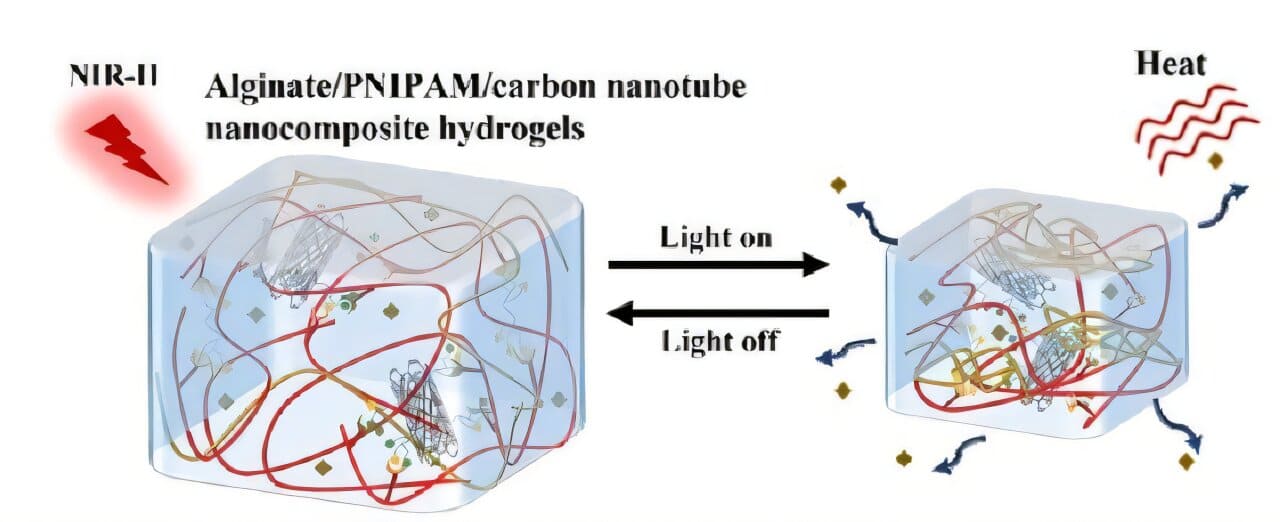Researchers from the Institute of Polymer Science and Engineering, National Taiwan University, have developed a smart gel that responds to multiple stimuli for precise drug release.
Gels that respond to second near-infrared (NIR-II) light have shown promise in medical uses because they can be activated from a distance and NIR-II light can penetrate deeply into tissues, making the NIR-II-responsive gel a valuable platform for non-invasive and targeted drug delivery.
However, traditional reliance on a single NIR-II response mechanism often falls short of meeting the diverse requirements of clinical settings as different physiological conditions require more adaptable release pathways. Recognizing this, researchers have innovatively combined multiple materials to create a new generation of versatile hydrogels in a study published in Small.
This cutting-edge nanocomposite hydrogel combines alginate, temperature-sensitive polymer poly(N-isopropylacrylamide) (PNIPAM), and NIR-II-responsive carbon nanotubes (CNTs), where alginate and CNTs are connected by dynamic interfacial crosslinks formed by imine and boronate ester bonds.
The integration of these components and interactions results in a highly responsive gel capable of adapting to various environmental stimuli such as pH, hydrogen peroxide, temperature, and NIR-II light.
The dynamic connections between alginate and CNTs contribute to the stability of the gel while offering valuable features like self-healing and injectability, ideal for minimally invasive medical interventions.
Researchers demonstrate exceptional performance of the alginate/PNIPAM/CNT hydrogel in both in vitro and in vivo drug release studies, showing the hydrogel undergoes structural transformations when exposed to environmental changes.
Notably, NIR-II light induces a temperature-sensitive reaction within the hydrogel, enhancing the targeted release with minimal invasiveness. These characteristics position the alginate/PNIPAM/CNT hydrogel as a promising candidate for next-generation drug delivery systems.
"Multi-responsive hydrogels can be used to pave the way for more personalized health care solutions by offering improved adaptability and effectiveness in treating complex clinical conditions," says Prof. Yi-Cheun Yeh.
More information: Bo‐Yan Li et al, Engineering Multiresponsive Alginate/PNIPAM/Carbon Nanotube Nanocomposite Hydrogels as On‐Demand Drug Delivery Platforms, Small (2025). DOI: 10.1002/smll.202407420
Journal information: Small
Provided by National Taiwan University


